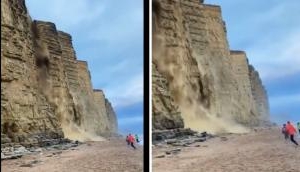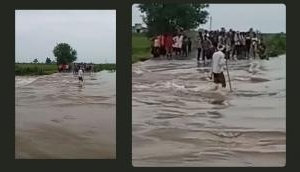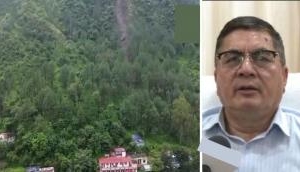Art of misleading: Sri Sri's 'no trees were cut' defence is a fig leaf. Here's why

Prime Minister Narendra Modi has legitimised the Art of Living's festival, inaugurating an event that just a day before was found by the National Green Tribunal to have destroyed Yamuna's floodplains.
Politics aside, this was probably the result of the exceptional way in which the AOL fiasco was dominated by references to trees being cut.
Also read - NGT committee member CR Babu disagrees with approval given to AOL event
Maybe it is because trees, by giving oxygen, are our biggest symbol of nature.
But AOL, and its chief Ravi Shankar, have taken great pains to turn opposition to AOL into one about chopping trees. Despite scientific reports saying the event permanently damaged the Yamuna river floodplains, Shankar's rebuttals have been about trees, trees and trees, and how they weren't cut.
Maybe they weren't. But that's not the point.
The Yamuna floodplains, like the rest of nature, are more than just about trees. Like the rest of nature, its value lies less in flat "beauty", and more in the chaotic mix of wetland, vegetation, grasses, and slopes, that all survive by depending on each other.
AOL flattened the land to build its record size stage .This destroyed aquatic plants
The next time Ravi Shankar says no trees were cut, here are five things you can tell him:
-
Levelling the land: The AOL event has flattened the land to build its record size stage to accommodate 3 lakh persons. First, this destroyed aquatic plants. Normally, water would seep in through the land and recharge groundwater. But this won't happen now because land has been "compacted" - a sponge that has been pressed hard doesn't absorb as much water.
-
Wetlands are gone: These lands contain some vegetation like reeds, which grow in wetland areas. AOL has accepted that it has removed these, but in the spirit of clearing a mess. But these plants play the role of purifying water. Wetlands are also home to birds.
-
Change in slopes: Topography of a floodplain is important. When there is a flood, it gives a direction to water. The unruly landscape is formed by years of water flow. Now that it is flat, if there's a flood, the water will flow not along the river but into other areas it has never entered.
Roads next to the river: Any construction within 100 metres of Yamuna is not allowed, as it is a "no development zone" but AOL has made roads along the river. In 2013, the NGT had even ordered destruction of all structures that had been built in this zone.
-
Fragmenting the floodplain: The original floodplain of Yamuna was long and contiguous. It has been cut into pieces by all kinds of encroachments, as well as government offices. The AOL event will add to this fragmentation. This stops the lateral movement of water and fish. As it is, the AOL has filled up several ponds and small water bodies on the floodplains. A study by Wetlands International found a "strong relationship" between the fish in the river, and population of birds at Okhla Bird Sanctuary.
"[Ravi Shankar] might be thinking that he hasn't caused any visible and physical damage to the place but he has caused serious damage to the topography and some of its natural functions, of which he perhaps isn't aware," Prof CR Babu, a member of the committee, told Catch in a recent interview.
Besides, there is tremendous biodiversity in a floodplain, much beyond simple trees. According to the Wetlands International study, the Yamuna floodplain supports 36 fish species, 131 bird species, and almost 200 types of water plants.
So, Sri Sri, please spare us the tree cutting arguments.
More in Catch - Saffron trumps green: How 'AOL vs environment' debate turned communal
Red flagged: NGT ignored reports citing damage the AOL event would cause







![BJP's Kapil Mishra recreates Shankar Mahadevan’s ‘Breathless’ song to highlight Delhi pollution [WATCH] BJP's Kapil Mishra recreates Shankar Mahadevan’s ‘Breathless’ song to highlight Delhi pollution [WATCH]](https://images.catchnews.com/upload/2022/11/03/kapil-mishra_240884_300x172.png)

![Anupam Kher shares pictures of his toned body on 67th birthday [MUST SEE] Anupam Kher shares pictures of his toned body on 67th birthday [MUST SEE]](https://images.catchnews.com/upload/2022/03/07/Anupam_kher_231145_300x172.jpg)






